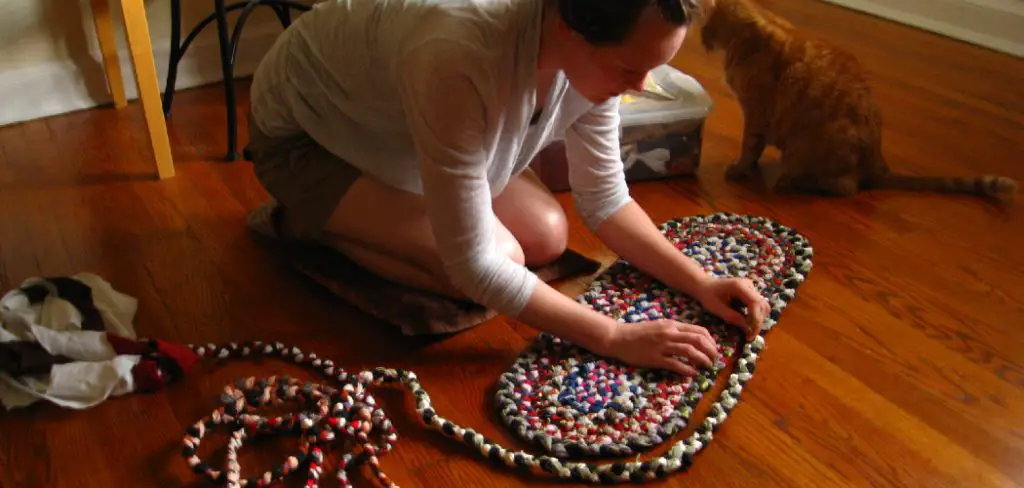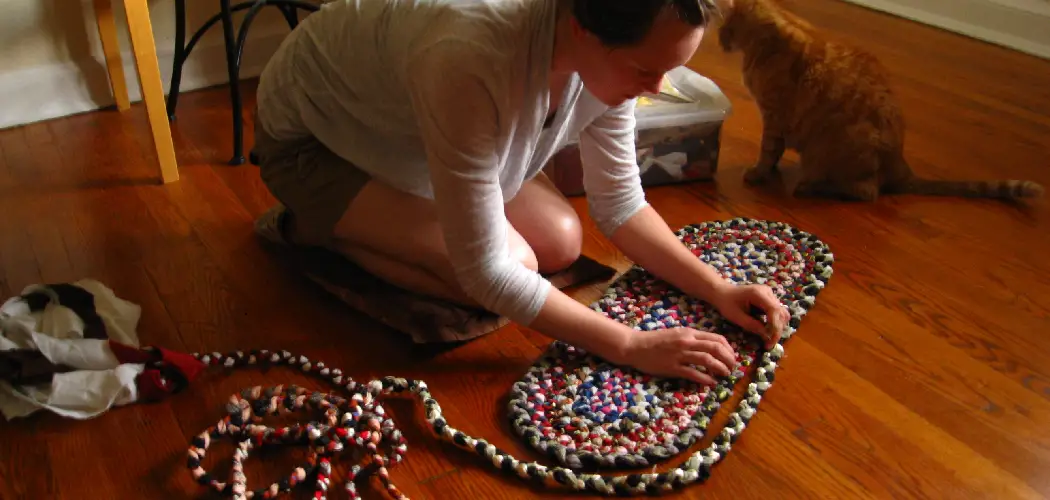Yes, you can replace a piece of carpet easily by following these simple steps. Are you tired of looking at that stained or damaged patch on your carpet?
Good news! You can replace a piece of carpet without having to replace the entire room’s flooring. Whether it’s a small area or a larger section, replacing a piece of carpet is a practical solution that can save you time and money.
In this guide, we’ll walk you through the steps to replace a piece of carpet, from removing the damaged section to installing a new piece seamlessly. By the end, you’ll be ready to tackle this DIY project and restore the look of your carpet in no time. So let’s get started!

Why Replace Your Carpet?
Replacing a piece of carpet is a viable option when damage occurs in a specific area. It allows you to maintain the overall appearance and functionality of your flooring without the need for a complete replacement.
1. Natural Wear And Tear
Over time, your once pristine carpet can start showing signs of natural wear and tear. The fibers may become frayed, matted, or discolored, making your carpet look old and worn-out. When this happens, it’s a clear indication that it’s time to replace your carpet.
While regular vacuuming and professional cleaning can help maintain your carpet’s appearance, they can only do so much. Eventually, the constant foot traffic and daily use will take a toll on your carpet, and it will lose its original luster and appeal.
Moreover, a worn-out carpet not only looks uninviting, but it also poses safety hazards. Loose fibers and uneven patches can cause trips and falls, especially for children and the elderly. By replacing your carpet, you can ensure a safe and visually pleasing environment for your family and guests.
2. Stains And Odors
Accidents happen, especially if you have pets or young children. Whether it’s a spilled glass of red wine or a pet accident, stains are a common occurrence on carpets. Even with regular cleaning, some stains may be stubborn and impossible to remove entirely.
Foul odors can also become an issue, particularly if your carpet has absorbed pet odors or trapped food smells over time. These lingering smells can be unpleasant and difficult to eliminate, even with air fresheners or carpet deodorizers.
Replacing your carpet can effectively address these stain and odor problems. It provides you with a fresh start, free from nasty smells and unsightly stains. With a new carpet in place, you can create a clean and odor-free living space for you and your family.
3. Style Or Design Change
As the years go by, your preferences and home decor style may change. That plush, cream-colored carpet that was once in vogue may no longer suit your evolving tastes and modern aesthetic. In such cases, it’s time to consider replacing your carpet to match your current style and design preferences.
Maybe you’re transitioning from the classic look to a more contemporary or minimalistic approach. Perhaps you want to add a pop of color or switch to a different texture that better complements your furniture and overall interior design scheme. Whatever the reason, replacing your carpet allows you to update the look and feel of your home, creating an ambiance that truly reflects your personality and style.
Preparation Tips
Replacing a piece of carpet can give your room a fresh look and feel. It’s important to properly prepare the space before starting the replacement process to ensure a smooth and successful installation. Here are a few essential preparation tips to keep in mind.
1. Measuring The Area
Before you begin, it’s crucial to measure the area where you will be replacing the carpet. This will help you determine the amount of carpet material you will need to purchase. Measure the length and width of the area and calculate the square footage. Remember to account for any irregularities or unique features of the space, such as doorways or closets.
2. Selecting The Right Carpet
Choosing the right carpet for your replacement is vital to achieving the desired look and quality. Consider factors such as the room’s function, foot traffic, and your personal preferences in terms of style and color. Additionally, make sure to select a carpet that matches or complements the existing flooring and decor in the surrounding area.
3. Removing Furniture And Prepping The Space
Before you can replace the carpet, you’ll need to clear the area of any furniture or obstacles. Start by removing all movable items from the room, such as chairs, tables, and floor lamps. If you have larger furniture pieces that cannot be moved, such as heavy sofas or bookcases, cover them with plastic sheets or tarps to protect them from dust and debris during the replacement process.
Once the space is clear, it’s essential to thoroughly clean the subfloor. Remove any existing carpet padding, nails, staples, or adhesive residue. Sweep or vacuum the area to ensure it is free of any dirt or debris. A clean subfloor will provide a smooth surface for the new carpet installation and help extend its lifespan.
By following these preparation tips, you’ll be well on your way to replacing a piece of carpet efficiently and effectively. With the right measurements, a carefully selected carpet, and a clean, clear space, you can achieve beautifully refreshed flooring that enhances the overall ambiance of your room.
Installation And Transformation
Replacing a piece of carpet can breathe new life into your flooring and transform the look and feel of any room. Whether you have a worn-out or damaged area, or you simply want to update your carpet, the installation process is crucial to achieving a seamless and stunning result. In this blog post, we will guide you through the step-by-step process of replacing a piece of carpet, ensuring proper subfloor preparation, installation techniques, and finishing touches for a successful transformation.
1. Removing The Old Carpet
Before you can install new carpet, you need to remove the old one. This process begins by carefully lifting the damaged or worn-out carpet using a pair of pliers. Start at one corner and gradually work your way to the opposite corner, keeping the movements smooth and controlled.
Next, pull the carpet across the room, rolling it as you go. Make sure to remove any tack strips, staples, or adhesive residue from the subfloor. A scraper or putty knife can be helpful in scraping away any remaining materials.
2. Proper Subfloor Preparation
Preparing the subfloor is a crucial step that ensures the longevity and appearance of your new carpet. Start by thoroughly cleaning the subfloor, removing any dirt, dust, or debris. This will create a clean surface for proper carpet adhesion and prevent any imperfections from showing through.
If there are any uneven areas, use a self-leveling compound to smooth them out. Fill in holes or cracks with an appropriate filler, ensuring a level surface. It’s essential to allow the subfloor to dry completely before moving on to the next step.
3. Installing The New Carpet
Now it’s time to install the new carpet. Start by measuring the area where the replacement piece will go. Allow for a few extra inches on each side to ensure a precise fit and easy installation.
Place the new carpet piece over the desired area, ensuring it aligns correctly with the surrounding carpet. Use a carpet stretcher to ensure a tight fit and secure the edges with tack strips. Trim any excess carpet using a sharp utility knife, following the line of the surrounding carpet for a seamless transition.
4. Finishing Touches And Post-installation Care
After the installation, it’s important to take care of the finishing touches. Vacuum the replaced section to remove any loose fibers and ensure a clean and uniform appearance. If necessary, apply a carpet protector to enhance the longevity and resistance of your new carpet.
Regular maintenance, such as vacuuming and immediate spot cleaning, is vital to keep your carpet looking its best. Following these post-installation care tips will help maintain the beauty and durability of your newly replaced carpet for years to come.
Frequently Asked Questions On Can You Replace A Piece Of Carpet
Can You Replace A Piece Of Carpet Without Replacing The Entire Carpet?
Yes, it is possible to replace a piece of carpet without replacing the entire carpet. By accurately measuring the damaged area and carefully cutting out the section, a new piece can be seamlessly installed using a carpet patch kit or by seeking professional help.
Can You Match The New Carpet Piece With The Existing Carpet?
Yes, it is possible to match the new carpet piece with the existing carpet. It is important to consider the age, wear, and color fading of the existing carpet. By sourcing the same or a similar carpet type and pattern, a professional installer can achieve a seamless and nearly invisible repair.
How Much Does It Cost To Replace A Piece Of Carpet?
The cost to replace a piece of carpet depends on various factors such as the size of the damaged area, the type of carpet, and whether you hire a professional or do it yourself. On average, the cost can range from $100 to $300 for a small area repair, while larger repairs or extensive matching may cost more.
Conclusion
Replacing a piece of carpet is definitely possible and can be a cost-effective solution for minor damages or stains. By following the right steps and with the help of professionals, you can seamlessly blend the new piece with the existing carpet, ensuring a visually pleasing result.
So, don’t let a small carpet issue become a major headache. Consider replacing that piece and restore the beauty of your home.

